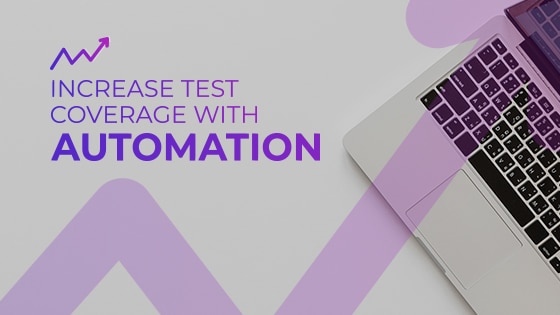Explore the importance of Web UI testing automation, its best practices, and how to effectively implement it in your software development process.


As we navigate the digital age, the importance of delivering high-quality, user-friendly software has never been more critical. One key aspect of ensuring this quality is through Web User Interface (UI) testing. But how can we make this process more efficient and reliable?
The answer lies in automation.
Testing is an evolving journey of refinement and adaptation.
At Abstracta, we offer customized solutions to actively contribute to the elevation of software quality. As we embrace new methodologies and innovations, our focus remains steadfast on delivering exceptional user experiences through effective and efficient practices.
In this article, we share valuable information and a step-by-step guide to Automating Web UI Testing.
Understanding Web UI Testing Automation


As we delve into the intricacies of Web UI testing automation, starting from scratch to cover the topic in an advanced manner, several common questions arise.
Here, we address these queries to provide you with a clearer understanding of the subject and guide you step by step on how to automate Web UI testing effectively.
What is UI testing?
UI testing focuses on testing the graphical user interface of an application, including how it responds to user inputs, its visual elements, and overall usability.
What is a Web UI Test?
A Web UI test involves evaluating the user interface of a web application to ensure it functions correctly and provides a seamless user experience. This includes checking visual elements, user interactions, and overall application functionality.
Can UI Testing Be Automated?
Yes, UI testing can be automated. Automation involves using tools and scripts to perform UI tests without manual input, allowing for continuous testing and integration within the development lifecycle.
What is Web UI Testing Automation?
It is the process of using software tools to execute pre-scripted tests on a web application’s user interface. This approach is crucial in today’s fast-paced software development environment. Not only does it increase efficiency but also reduces the risk of human error, boosting a seamless user experience.
On balance, Web UI testing automation is not just about running automated tests. It’s about creating a reliable and efficient testing process that can enhance the quality of the user interface. This involves designing test cases that cover all the critical aspects of the UI, developing test scripts that can execute these test cases, and using automated UI testing tools to run these scripts.
Moreover, it involves analyzing the test results and using this information to improve the UI. This could mean fixing bugs, enhancing UI elements, or even redesigning the UI to make it more user-friendly.
So, in essence, what is Web UI automation testing? It is a continuous process that plays a vital role in the software development lifecycle.
Don’t miss this article! 10 Tips for Choosing an Automation Testing Company
Manual vs. Automated Web UI Testing


While manual tests have their merits, they can be time-consuming and prone to errors. On the other hand, test automation offers speed, accuracy, and repeatability. It allows us to run automated UI tests 24/7, making it an ideal choice for large-scale projects and continuous integration.
Manual tests need a tester interacting with the software in the same way a user would whereas automated tests involve writing test scripts that can automatically perform these interactions. This saves time and also ensures that the tests are performed consistently every time.
Moreover, teams can run automated tests on multiple devices and operating systems, enabling the software to work correctly in all environments.
However, this doesn’t mean that manual testing is obsolete. There are still many cases where manual testing is necessary, such as exploratory testing, where the tester actively explores the software to find bugs. The key is to find the right balance between manual and automated testing, using each method where it is most effective.
If you want to dive deeper into the differences between functional and non-functional testing, take a closer look at this article.
Best Practices for Web UI Testing Automation


Starting Early and Script Creation
Adopting best practices is key to successful Web UI testing automation. These include:
- Prioritizing tests based on their impact and frequency of use.
- Crafting effective test scripts.
- Keeping tests simple and focused.
- Regularly reviewing and updating tests to match UI changes.
One of the best practices for Web UI testing automation is to start early in the development process. This allows you to catch and fix bugs before they become too complex and costly to fix. It also helps you to keep your test cases up-to-date with the latest changes in the UI.
The creation of scripts is both an art and a science. A well-written script is a blueprint for successful automated test cases. It’s not just about covering the functional aspects but also about simulating real user behaviors. Our scripts are concise, maintainable, and continuously refined to mirror the evolving nature of web applications.
We aim to cover a spectrum of test scenarios, from the most common user pathways to the edge cases that challenge the robustness of the UI.
Data-Driven Testing and Regular Reviews
Another best practice is to use a data-driven approach. This involves using different sets of data for your tests to ensure that the software can handle various input scenarios. This can help you catch data type errors and other issues that might not be apparent when using only valid data.
Incorporating data-driven testing into our strategy significantly broadens the scope of our automated UI tests. By feeding a variety of data sets into our test scenarios, we can simulate a wide range of user interactions. This approach enhances test coverage and helps in uncovering issues related to different data types, user inputs, and more.
Finally, it’s important to regularly review and update your test cases and test scripts to be sure that they are still relevant and effective.
Don’t miss this article! Shift-Left Testing & Shift-Right Testing, a Possible Strategy
Tools and Technologies for Web UI Testing Automation


There are numerous Web UI automation testing tools available. Any automated UI testing tool might be an opportunity for boosting quality. Selenium and Cypress.io are just a few examples. The choice of tool depends on various factors such as the complexity of the web application, the programming language used, and the budget.
In addition to these, there are also specialized UI testing tools, for specific types of testing. For example, there are tools for GUI testing, mobile testing, and API testing. These tools can help enhance the coverage of your tests and enable you to test various aspects that might not be possible with general-purpose tools.
Moreover, many of these tools support multiple programming languages, meaning you can write your test scripts in the language you are most comfortable with. Some tools also offer features like cross-browser testing and headless browser testing, which can help you ensure that your web application works correctly in different browsers and environments.
Step-by-Step Guide to Automating Web UI Testing


Implementing a framework for Web UI testing automation involves several steps:
1. Identify the Requirements and Scope of Testing
The first step in implementing a framework for Web UI testing automation is to understand the requirements and scope of testing. This involves identifying the key features of the UI that need to be tested, the different input scenarios that need to be considered, and the expected outcomes for each scenario.
2. Choose the Appropriate Tools and Technologies
Once you have a clear understanding of the requirements, choose the tools that best fit your project’s needs. Consider factors like browser compatibility, programming language support, and ease of integration. This could be a general-purpose tool like Selenium or a specialized tool like Cypress.io for JavaScript testing. The choice of tool would depend on the requirements of your project and the skills of your team.
3. Design and Develop the Test Cases
The next step is to design and develop the test cases. This involves:
Develop Test Scripts
Write scripts that accurately reflect user behavior. Ensure they are maintainable and easily adaptable.
Set Up Testing Environment
Configure the testing environment to mimic production settings. This includes setting up servers, databases, and any other necessary infrastructure.
4. Execute Tests
Run your automated tests on the web application. You can do it manually or integrate it into your CI/CD pipeline for continuous testing. In your pipeline, you can run the test on your own cloud or servers, or use third-party providers such as Saucelab or Blazemeter.
5. Analyze The Results of Your Automated Tests
Review the test results for insights. Look for patterns and recurring issues that need attention. You should analyze them aiming to to identify any defects or issues with the UI. You may check various metrics such as the number of defects detected, the time saved compared to manual testing, and the coverage of the test cases.
In addition to these metrics, you can also measure the quality of the test cases and test scripts by reviewing the test cases and test scripts for completeness, accuracy, and clarity. High-quality test cases and test scripts can lead to more effective testing and fewer missed defects.
Another important metric is the reliability of the tests. This involves measuring how often the tests produce the correct results and how often they fail due to issues with the tests themselves rather than issues with the software being tested. Reliable tests can provide more confidence in the test results and reduce the time spent investigating false positives.
6. Maintain and Update the Tests as Needed
Regularly revisit and update your testing strategy to align with new features and changes in the application. This involves updating the test cases and test scripts to match any changes in the UI. It also involves re-running the tests after any changes to the UI to ensure that the changes have not introduced any new issues.
Keeping Tests Up-to-Date
Keeping your Web UI testing automation up-to-date is crucial. Automated tests should be part of the continuous integration process to ensure they are always current.
Updating Scripts and Tools
In addition to updating the test cases, it’s also important to update the test scripts and the testing tools. This can involve updating the scripts to use new features or capabilities of the testing tools, updating the testing tools to the latest version to take advantage of bug fixes and improvements, or even switching to a new testing tool if it can provide significant benefits over the current tool.
Continuous Monitoring and Improvement
Finally, it’s important to continuously monitor the effectiveness of the Web UI testing automation and make improvements as needed. This can involve analyzing the test results, identifying areas where the testing can be improved, and implementing the necessary changes.
There is not a final step! Continuous improvement is key to effective testing. This continuous improvement process can help ensure that the Web UI testing automation remains effective as the software and the testing requirements evolve.
Would you like to dive deeper? We invite you to read our Complete Guide to Automated Functional Testing.
Overcoming Challenges in Web UI Testing Automation


Like any process, Web UI testing automation comes with its challenges. These can range from selecting the right tool to dealing with dynamic web elements. However, with a well-planned strategy and a robust framework, these challenges can be effectively managed.
Dealing with Dynamic Web Elements
One of the main challenges in Web UI testing automation is dealing with dynamic web elements. These are elements that change their properties or behavior based on user interaction or other factors. Dealing with these elements can be tricky, but some techniques and tools can help. Tools like Testim.io use AI/ML capabilities to deal with this challenge and update test scripts on the fly.
Enabling Comprehensive Test Coverage
Another challenge is ensuring that the tests cover all the important aspects of the UI. This involves designing comprehensive test cases that cover all the key features of the UI, different input scenarios, and different user paths. It also involves regularly reviewing and updating the test cases to match any changes in the UI.
Selecting the Right Tool
Finally, selecting the right tool for Web UI testing automation can also be a challenge. There are many tools available, each with its strengths and weaknesses. The choice of tool would depend on the requirements of your project, the skills of your team, and your budget.
Integrating Web UI Testing Automation in Agile Development


In an agile development environment, Web UI testing automation plays a vital role. It allows for quick feedback, early detection of defects, and faster delivery of high-quality software.
Web UI testing automation can be integrated into the agile development process in several ways. One way is to include testing tasks in the sprint backlog. This ensures that testing is considered as part of the sprint planning and that sufficient time is allocated for testing.
Another way is to run automated testing as part of the continuous integration process. This allows defects to be detected and fixed quickly, reducing the risk of defects accumulating and becoming more difficult and costly to fix later.
Finally, Web UI testing automation can also support the agile principle of responding to change. By automating the tests, changes to the software can be tested quickly, making it easier to adapt to changes in the requirements or the design of the software.
The Future of Web UI Testing Automation


The future of Web UI testing automation is promising. With advancements in AI and machine learning, we can expect more intelligent and efficient testing tools like Testim.io and mabl. These technologies will enable us to automate even more complex tasks, further enhancing the quality of our software.
Enhancements in Automated Testing
- Intelligent Testing Tools: With the integration of AI and machine learning, testing tools are becoming more capable of handling complex testing scenarios automatically, making the testing process more efficient and effective.
- Cloud Computing: This technology can provide the resources needed to run large-scale tests quickly and cost-effectively.
- Containerization: Offers the isolation needed to run tests in a consistent and controlled environment, enabling tests to be reliable and repeatable across different environments.
Moreover, as the complexity of web applications continues to increase, the need for effective Web UI testing automation will only become more critical. By staying up-to-date with the latest trends and technologies, we can continue to improve our Web UI testing automation and deliver high-quality, user-friendly software.
All in all, Web UI testing automation is a necessity in today’s digital world. By understanding its importance, adopting best practices, and effectively implementing it, we can deliver high-quality, user-friendly software that meets the ever-evolving needs of our users.
If you are not sure which is the best tool for you, contact us! We have partnered with the best tool vendors in the market to provide you with the best solution to meet your needs.
Looking for expert assistance in implementing Web UI testing automation? We are here to provide you with top-notch services and solutions tailored to your unique needs.


Tags In


Abstracta Team
Related Posts
Webinar Summary: How to Use Automation to Increase Test Coverage
Testing is like sweeping, it’s better with a Roomba Recently, I had the pleasure of presenting the concept of test coverage and its relationship with automation for a SmartBear webinar featuring CrossBrowserTesting. If you are someone who would rather read a blog post than watch…
How to Avoid False Positives and False Negatives in Test Automation
Make sure you can trust the results of your test automation When dealing with automation, one of its most delicate subjects is the results that lie, otherwise known as false positives and false negatives. Those who have already automated know this to be an issue…
Search
Contents








